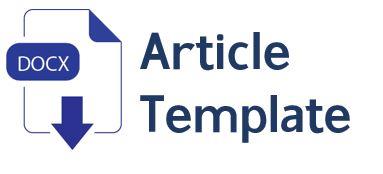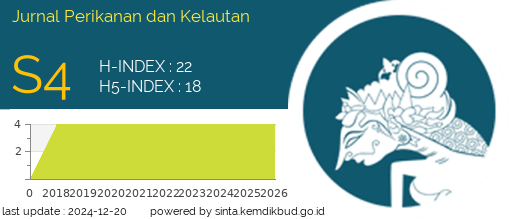Stakeholder Analysis in the Management of Marine Conservation Area in Indragiri Hilir District
DOI:
https://doi.org/10.31258/Keywords:
Marine Protected Area, Indragiri Hilir, stakeholdersAbstract
Various human activities around the marine protected area in Indragiri Hilir Regency put considerable pressure on coastal and marine ecosystems. The Marine Protected Area of Solop Beach Pulau kecil Park in Indragiri Hilir Regency has been designated as a marine protected area to protect water areas, with a zoning system to realize sustainable management of fish resources and the environment. The research was carried out in October 2022 in the marine protected area in Indragiri Hilir Regency. This study aims to analyze the role of stakeholders involved in the management of marine protected areas in Indragiri Hilir Regency, which was carried out through in-depth interviews with informants, namely selected stakeholders. The results showed that the role of stakeholders in the management of marine protected areas in Indragiri Hilir Regency was grouped into: input (Provincial Environment and Forestry Service, Provincial Maritime Affairs and Fisheries Service and Ministry of Maritime Affairs and Fisheries), stake (Village Head), output (Managers, group’s community, fishermen, and NGOs) and unused (Academics).
Downloads
References
Bernstein, L., Bosch, P., Canziani, O., Chen, Z., Christ, R., Davidson, O., Hare, W., Huq, S., Karoly, D. J., Kattsov, V. (2008). Climate change 2007 synthesis report. Intergovernmental Panel on Climate Change.
Bourgeois, R., & Jesus, J. (2004). Participatory Prospective Analysis: Exploring and Anticipating Challenges with Stakeholders. UNESCAP-CAPSA: Centre for Alleviation of Poverty.
Cebrián-Piquera, M.A., Filyushkina, A., Johnson, D.N., Lo, V.B., López-Rodríguez, M.D., March, H., Oteros- Rozas, E., Peppler-Lisbach, C., Quintas-Soriano, C., Raymond, C.M., Ruiz-Mallén, I., Van Riper, C.J., Zinngrebe, Y., Plieninger, T. (2020). Scientific and local ecological knowledge, shaping perceptions towards protected areas and related ecosystem services. Landscape Ecology, 35(11): 2549–2567.
Chan, K.M.A., Boyd, D.R., Gould, R.K., Jetzkowitz, J., Liu, J., Muraca, B., Naidoo, R., Olmsted, P., Satterfield, T., Selomane, O., Singh, G. G., Sumaila, R., Ngo, H. T., Boedhihartono, A.K., Agard, J., Aguiar, A.P.D., Armenteras, D., Balint, L., Barrington-Leigh, C., Brondízio, E.S. (2020). Levers and leverage points for pathways to sustainability. People and Nature, 2(3): 693–717. https://doi.org/10.1002/pan3.10124.
Gould, R.K., Morse, J.W., Adams, A.B. (2019). Cultural Ecosystem Services and Decision-making: How Researchers Describe the Applications of Their Work. People and Nature, 1(4): 457-475.
Hardjomidjojo, H. (2002). Metode analisis prospektif. Bogor: IPB.
Keputusan Gubernur Riau Nomor Kptsn. 863/XI/2017. (n.d.). Pencadangan Kawasan Konservasi Pesisir dan Pulau-Pulau Kecil di Kabupaten Indragiri Hilir dan Kabupaten Rokan Hilir.
Leiserowitz, A., Maibach, E., Rosenthal, S., Kotcher, J., Bergquist, P., Ballew, M. T., Goldberg, M., Gustafson, A. (2019). Climate change in the American mind: November 2019. Yale Program on Climate Change Communication.
Mace, G. (2014). Whose conservation? Science, 345(6204): 1558-1560.
Oldekop, J.A., Holmes, G., Harris, W.E., & Evans, K.L. (2016). A Global Assessment of the Social and Conservation Outcomes of Protected Areas. Conservation Biology, 30(1), 133-141.
Palomo, I., Montes, C., Martin- Lopez, B., González, J.A., Garcia- Llorente, M., Alcorlo, P., Mora, M.R.G. (2014). Incorporating the Social-Ecological Approach in Protected Areas in the Anthropocene. Bioscience, 64(3), 181–191.
Prasetyo, A., Santoso, N., Prasetyo, L.B. (2017). Kerusakan Ekosistem Mangrove di Kecamatan Ujung Pangkah Kabupaten Gresik Provinsi Jawa Timur. Journal of Tropical Silviculture, 8(2): 130–133. https://doi.org/10.29244/j-siltrop.8.2.130-133.
Reed, S.M., Graves, A., Dandy, N., Posthumus, H., Huback, K., Morris, J., Prell, C.H., Quin, C.H., Stringer, L.C. (2010). What is social learning? Ecology and Society, 15(4).
Smith, J.W., Leahy, J.E., Anderson, D.H., Davenport, M.A. (2013). Community/agency trust and public involvement in resource planning. Society & Natural Resources, 26(4): 452-471.
Smith, P.D., & McDonough, M.H. (2001). Beyond public participation: Fairness in natural resource decision making. Society & Natural Resources, 14(3), 239–249.
Staddon, S., Byg, A., Chapman, M., Fish, R., Hague, A., Horgan, K. (2021). The Value of Listening and Listening for Values in Conservation. People and Nature, https://doi.org/10.1002/pan3.10232.
Stern, M.J., & Coleman, K.J. (2015). The Multidimensionality of trust: Applications in Collaborative Natural Resource Management. Society & Natural Resources, 28(2), 117-132.
Sugiyono. (2012). Metode Penelitian Kuantitatif Kualitatif dan R&D. Bandung: Alfabeta.
Tallis, H., & Lubchenco, J. (2014). Working together: A call for inclusive conservation. Nature, 515(7525), 27-28.
Undang-Undang Republik Indonesia Nomor 1 Tahun 2014. (n.d.). Pengelolaan Wilayah Pesisir dan Pulau-Pulau Kecil.
Van Riper, C.J., Foelske, L., Kuwayama, S.D., Keller, R., Johnson, D. (2020). Understanding the Role of Local Knowledge in the Spatial Dynamics of Social Values Expressed by Stakeholders. Applied Geography, 123, 102279. https://doi.org/10.1016/j.apgeog.2020.102279.
Widodo, M.L., Soekmadi, R., Arifin, H.S. (2018). Analisis Stakeholders dalam Pengembangan Ekowisata di Taman Nasional Betung Kerihun Kabupaten Kapuas Hulu. Jurnal Pengelolaan Sumberdaya Alam dan Lingkungan, 8(1): 55-61. DOI: 10.29244/jpsl.8.1.55-61.







